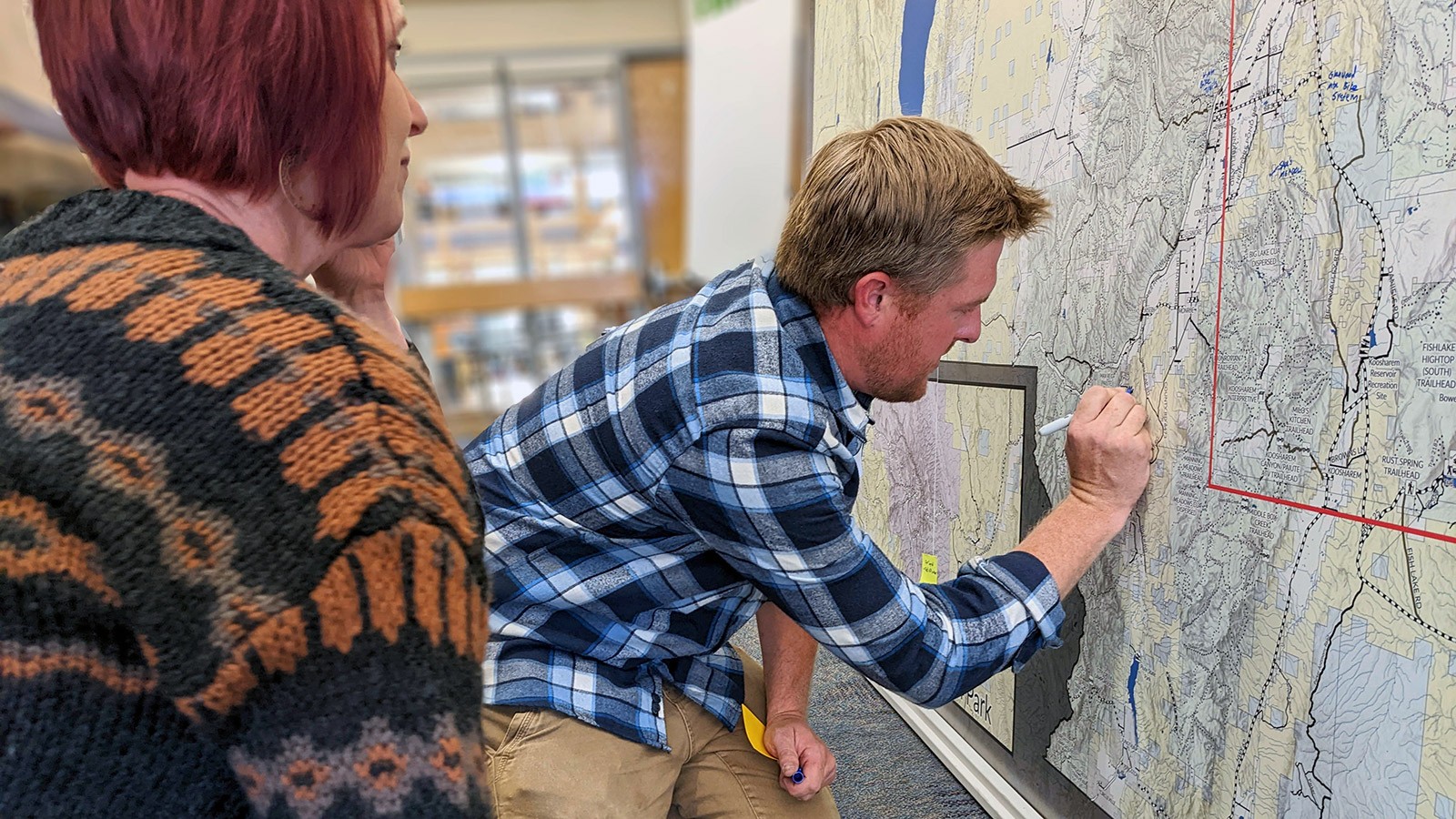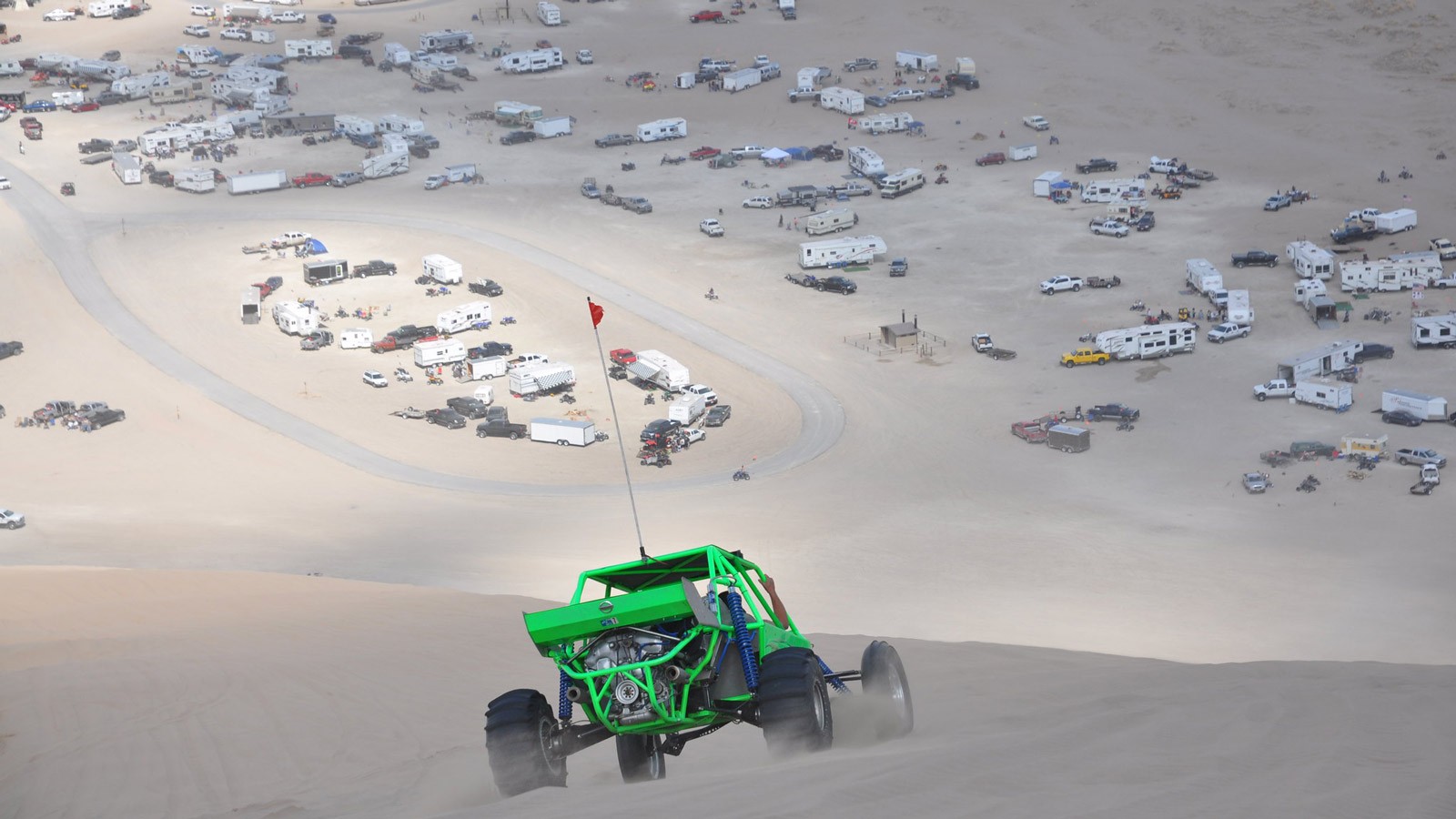USU Researchers Use Local Perspective to Build Utah's Outdoor Recreation Strategic Plan
By Lael Gilbert |
USU researchers met with outdoor resource managers in Ephraim, Utah, to discuss challenges in the state. (Photo Credit: USU/Lael Gilbert)
The group of recreation managers brandished permanent markers and sticky notes and prepared to assault an oversized map plastered across the wall of the conference room. The event was a listening session, sponsored by USU's Institute of Outdoor Recreation and Tourism (IORT), in Ephraim, Utah, in preparation to develop a new Outdoor Recreation Strategic Plan for the state. The map was wrong on some details — inevitable when you are tracking thousands of miles of recreation lands — but the people with on-the-ground knowledge were happy to provide corrections and updates.
Recreation managers had gathered from across central Utah — counties like Juab, Sevier and Sanpete, from smallish cities and even smaller towns, from national parks and state parks, forests and grazing lands. They all held responsibility, in some capacity to manage outdoor recreation sites in the region — OHV trail systems, boat launches, historic sites, campgrounds, visitor centers, trailhead, restrooms and more.
IORT has been tasked with gathering local perspectives on outdoor recreation issues to present to the state’s Outdoor Recreation Commission, and this was one of seven listening sessions held across the state. Facilitators wanted to hear the nitty-gritty; the challenges and trajectories small communities face as they host recreation visitors and try to protect and maintain outdoor places, what they hoped to see in the future, and what they need to achieve those goals. The information they collected and synthesized will guide the creation of the new strategic plan, a roadmap for how the state should invest in and manage,outdoor recreation resources.
From ebike regulations to “Sprinter van invasions,” Central Utah faces unique challenges in outdoor recreation management, said Jordan Smith, director of IORT in the Quinney College of Natural Resources. The sometimes-overlooked region — north of Utah’s iconic sandstone arches and south of the high-end ski resorts — has keenly felt the pressure from growing demands for recreation opportunities that the rest of the state has experienced, but doesn’t always have the infrastructure or institutional attention it needs to manage the veritable flood of temporary visitors.
For example, a few times each year a popular four-wheeler destination, Little Sahara, swells from a lonely, undulating landscape of sand dunes and wind to a temporary city of 50,000 recreation itinerants. The crowds require bathrooms, dumpsters, clean water and policing, and they depend on the nearest local town to provide it — Delta, with a population of just over 3,000.
There are the inevitable injuries that need attending, parties that need breaking up and missing riders that need tracking down. These kinds of events put tremendous pressure on local municipalities, places that don’t always have infrastructure to manage crowds and don’t always reap the economic boon that is assumed accompanies such events.
“We are half-a-gas-tank from Salt Lake City, which makes for some interesting and sometimes frustrating dynamics on the weekends,” said Utah Sen. Derrin Owens, participant in the workshop. Visitors don’t necessarily pay for hotel rooms, gas or restaurants when they come. They bring their own groceries and supplies, and leave behind plenty of impacts that have to be managed and repaired by local communities.
The region hosts hundreds of thousands of outdoor recreation visitors every year, tourists who flock to places like Mount Pleasant to traverse first-class OHV trails, to Fish Lake to spend a weekend at a backcountry campsite, to swim at Palisade Reservoir, or to visit state parks like Otter Creek, Yuba, Fremont Indian and Piute.
It used to be that central Utah had multiple options for low-key outdoor recreation, places where you could “go and get lost and be with yourself,” said Amy Myers, tourism director from Sevier County Economic Development. But as more well-known destinations in other parts of the state are reaching capacity and beyond, recreationists are moving further afield, and arriving en-masse in places that used to be considered mainly local stomping grounds.
The biggest driver of recreation growth in the state? Population growth, Smith said, much of it natural growth as Utah’s population expands, rather than an influx of new residents coming from outside. Plenty of growing pains are felt in the process.
There are some tough conversations that need to happen now, Smith said. Change is coming for all of Utah’s recreation lands, one way or another. These workshops are an important first step to better understanding and addressing all of Utah’s diverse outdoor recreation needs, and to collaboratively align on a shared vision and strategy to ensure we continue to grow a strong, sustainable outdoor recreation economy that enhances the quality of life for all Utahns.
The Little Sahara Recreation Area is one example of a place in Utah where high recreational use doesn't necessarily bring enough cash to the local economy to offset challenges. (Photo Credit: Bureau of Land Management)
WRITER
Lael Gilbert
Public Relations Specialist
Quinney College of Natural Resources
435-797-8455
lael.gilbert@usu.edu
CONTACT
Jordan Smith
Director
Institute of Outdoor Recreation and Tourism
435-830-6294
Jordan.smith@usu.edu
TOPICS
Land Management 123stories Recreation 69storiesComments and questions regarding this article may be directed to the contact person listed on this page.









